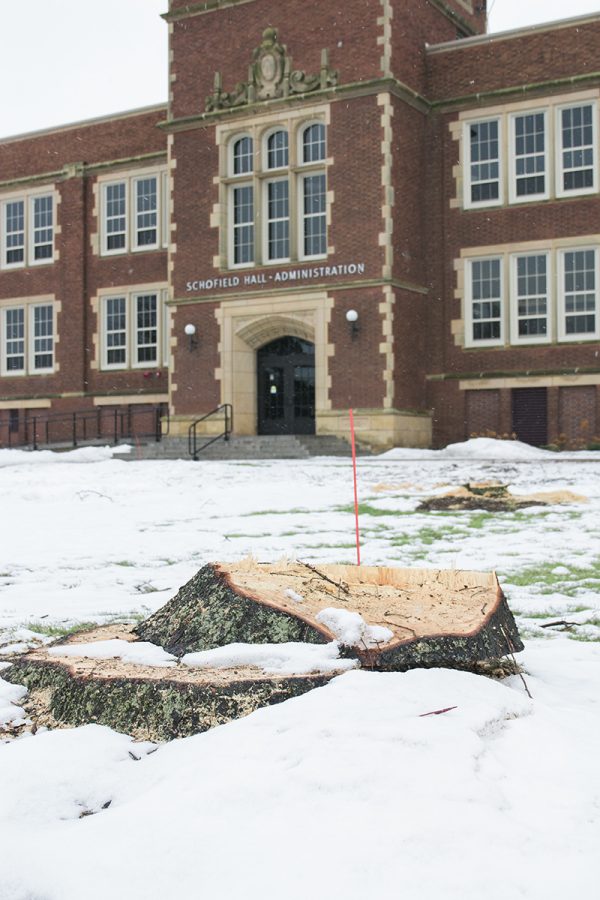Campus tree removal known to some, surprise to others
Garfield Avenue redesign plans result in 94 trees cut down and bring up questions of transparency and necessity
More stories from Hillary Smith
Photo by Kendall Ruchti
Though many trees along Garfield Avenue were chopped, more will be planted this spring and after construction is completed in 2030.
Nearly 100 trees on campus were cut down over winter break, stirring dismay and confusion from some students and faculty.
The tree removal was an early phase of the Garfield Avenue renovations, a multimillion dollar project that will result in replacing underground utilities, creating an outdoor classroom and making the stretch of road more pedestrian- and biker-friendly.
Plans for the project have been in the works since being designated for the 2010/30 budget.
Nevertheless, the removal took some by surprise. Conner Zielinski, a freshman studying world politics and German, was taken aback by the lack of trees when he returned to campus over break.
“I was a little bit upset because I didn’t realize the trees were going to be cut down. I was aware of the project happening but I was under the assumption that was happening in the summer,” Zielinski said, adding that his favorite tree — the silver maple across from the Ecumenical Center — had been chopped. Zielinksi said he knew about the project from the UW-Eau Claire homepage.
In an interview with the Leader-Telegram, Wilson Taylor, chairman of Eau Claire’s biology department, said he and others in the department were frustrated with the lack of communication between the project leaders and the department, particularly in the case of the aforementioned silver maple, which is estimated to have been around 130 years old.
Mike Rindo, assistant chancellor for facilities and university relations and chair of the Garfield Avenue project committee, acknowledged the tree removal was an unfortunate but necessary step to the redesigns.
“It’s always difficult to lose beautiful, mature trees,” Rindo said in a statement. “It’s an adjustment to see the changes beginning as we prepare for the mobilization phase of this extensive project.”
Alex Stout, a sophomore studying computer science and information studies, said he did not think any aspect of the project was hidden or misrepresented. However, he said he knew about the redesign plans because of his involvement with Student Senate.
“I was a little bit disappointed with the scope of the trees being cut down,” Stout said. “There were a lot of trees cut down, but it was communicated pretty effectively that they were going to cut them down, and it’s also due to the Garfield Avenue project so it makes sense they were cut down.”
Both Zielinksi and Stout said they understood why the removal was logistically necessary to accommodate the Garfield Avenue redesign plans, but were still disappointed to see the large number of trees that had to go.
Student Office of Sustainability Director Ethan Fuhrman, said he could see where people may be disappointed or frustrated with the cutting of the trees, but added it was inevitable due to the reality of the project.
Much of the redesign will be focused on replacing the utility lines, including sewage pipes, which Fuhrman said have not been updated since being installed in the 1950s and are a potential environmental hazard if not taken care of soon.
“The most important part of this tree removal, I think, is the promise the university has made to replace every tree that’s taken down at a rate of two to one,” Fuhrman said.
The Centennial 100 Trees Project took root in the fall with the planting of about a quarter of the planned trees. Fuhrman said the rest will be planted in the spring and after construction is completed.
Fuhrman said the trees that were cut down will be used by a non-profit in Eau Claire that uses urban trees for sculptures, decorations and other functional furniture. The use for the silver maple has not yet been determined.

